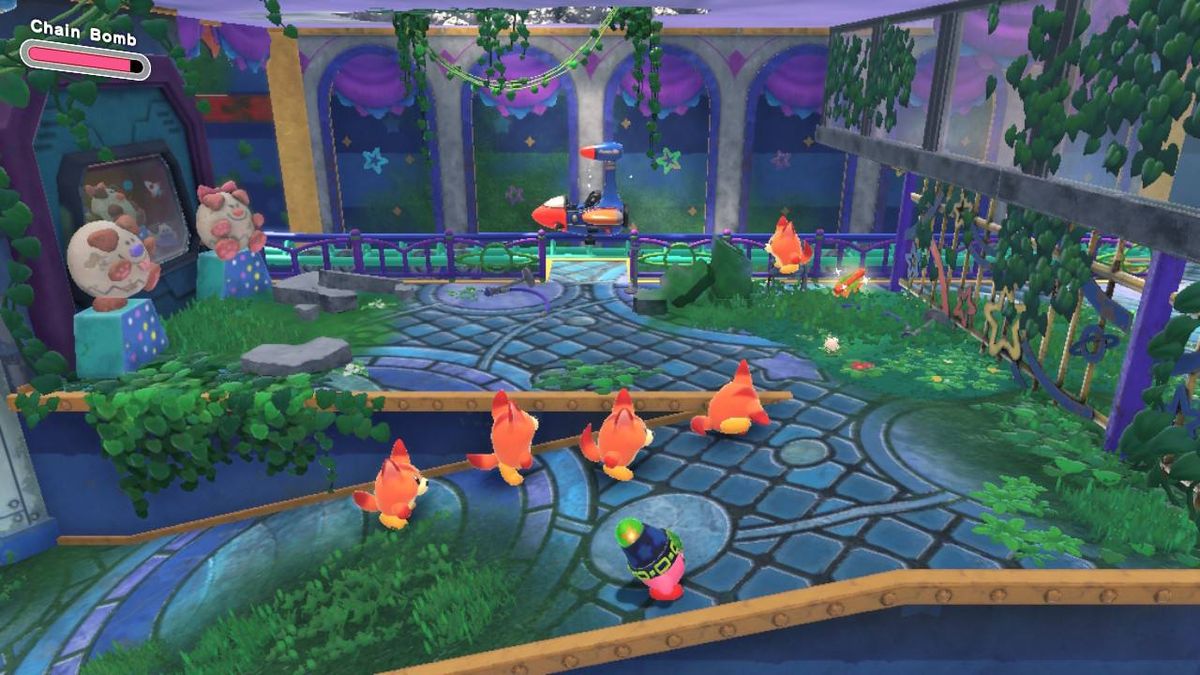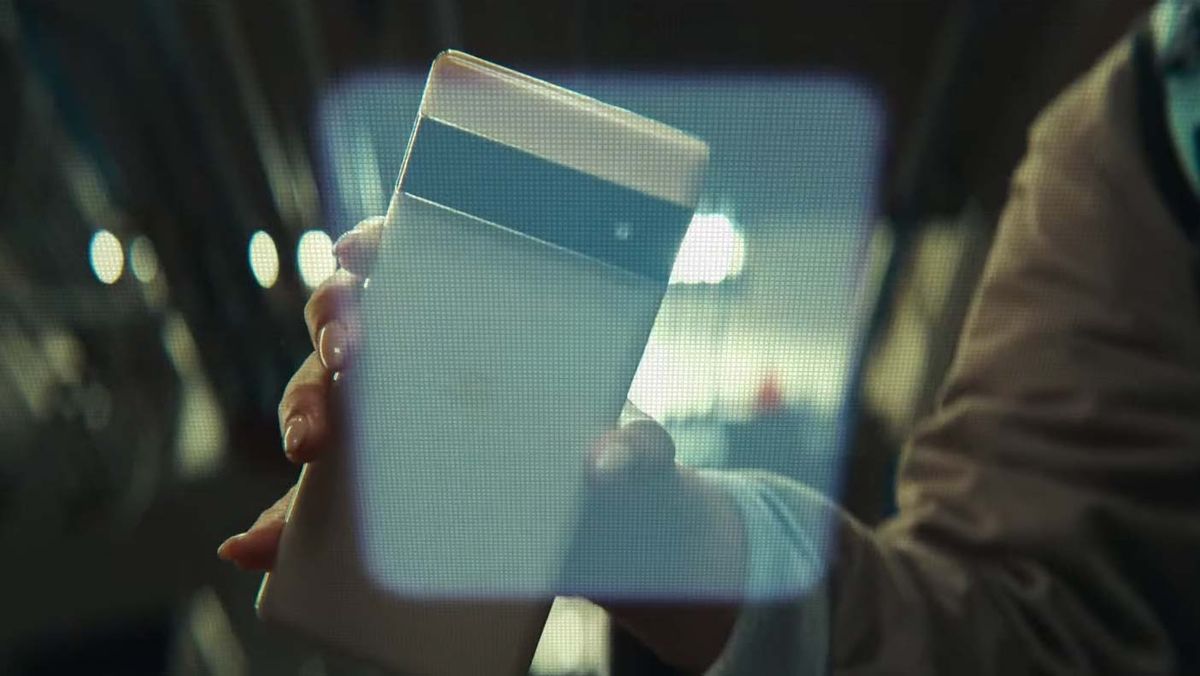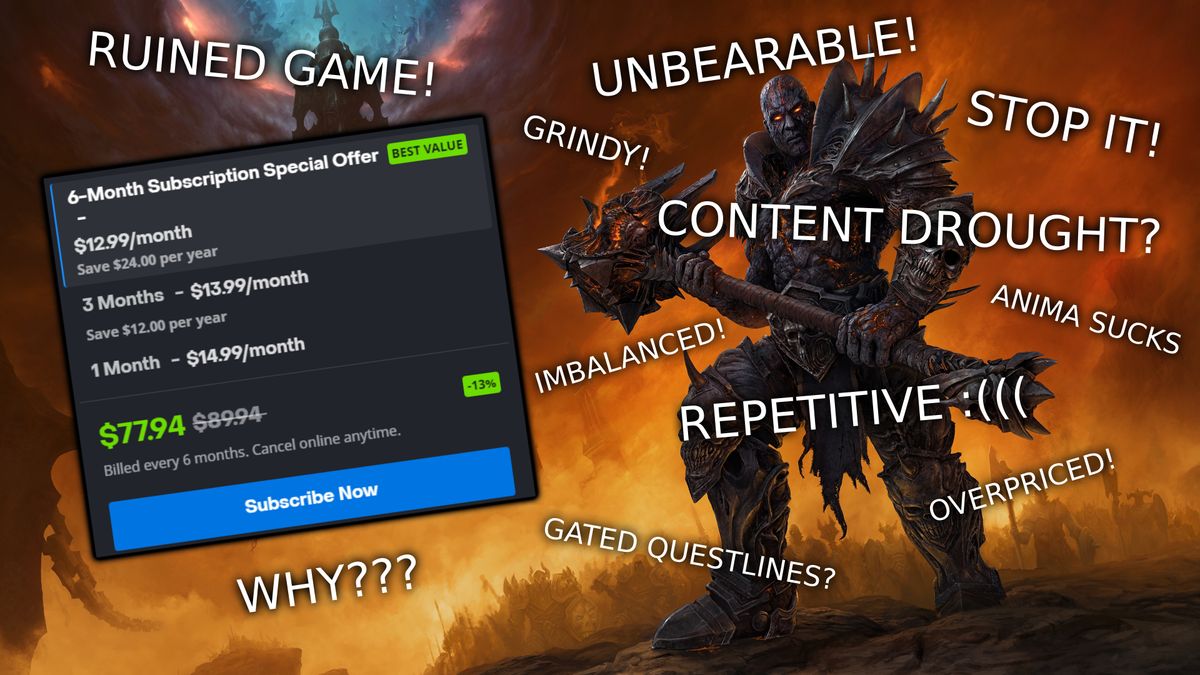In the third world of Kirby and the Forgotten Land, the titular character enters an abandoned theme park: Rides crowd the horizon, dogs circle a fountain, baby ducks waddle around stairs, and Kirby takes a picture at a photo stand. This park is a playground for the creatures of Kirby’s world to run around and have fun. At that moment the game reminded me that’s just what Kirby has always been: a playground for players to run around and poke at curiosities.
Since its beginning, the Kirby franchise has prioritized player enjoyment over traditional values of difficulty. Part of this was due to his ability to hover past any challenging enemies or obstacles. Another part came from Kirby levels focusing more on the interplay of Kirby’s copied powers and the dynamic spectacles they can produce.
Kirby and the Forgotten Land returns with many of these design values, but it only clings so tightly, as the translation to 3D revises some of the series’ well known elements. But overall, it makes its mark as one of the best Nintendo Switch games.
Entering a new dimension
In Kirby and the Forgotten Land, the pink blobby protagonist is in a fully 3D platformer for the first time. For years now, the Kirby series experimented with how to expand side scrolling levels with foreground and background movement and unique art directions, such as in Epic Yarn. Now many of the elements found in previous Kirby games are translated into 3D space. This includes enemies such as the bomb-jester Poppy Bros and the orange, easy-to-anger Scarfy. It also includes the step by step puzzles, levels with alternative pathways, and cute moments that will be familiar to many fans.
Kirby moves similarly to when he was in 2D. He can run, jump, hover for a bit before falling down and then bounce a single time off of the ground. There isn’t much complexity to the way Kirby moves in the Forgotten Land. Rather than expand Kirby’s moveset for 3D space, a lot of what he can do is simplified to jumping with the A button or one of three variations for pressing the B button. Although this is a decrease in movement granted by previous entries, the simplification helps elevate the world that Kirby is exploring. This isn’t a game focusing on moment to moment action, rather it’s a space for you to bounce Kirby around and explore.
Most of the time Kirby feels like a fidget toy. Kirby and The Forgotten Land almost never challenges the player to mind-crunching puzzles or sweat-inducing fights (although the finale of the game is a bit difficult). Instead, it provides a playbox full of environmental objects that Kirby can interact with via copy abilities or simple touch. Levels are made up of obstacles to jump past or run around that eventually lead to split paths with puzzles to save more Waddle Dees. These puzzles are never designed to leave one stumped. Typically, they just present a target or button which Kirby must touch while overcoming a small obstacle.
These puzzles are only a part of the fun, though. The primary enjoyment comes from just popping around a level and seeing the ways it responds to you. Walk into an area to suck up a new power and it’s likely the coming pathway will be designed for Kirby to utilize that ability in some fun way. For combat abilities like sword or cutter, boxes and enemies will be set up for Kirby to smash through. For powers with unique movement such as ice, the pathway may be covered with lava for Kirby to skate across. All of these moments only provide space for the player to find enjoyment in the powers provided rather than the challenge traditionally set for a player.
Closing the storybook
The translation to 3D also sheds a lot of the storybook, magical fairytale aesthetic that the Kirby series has held onto for decades now. Prior to Kirby and the Forgotten Land, this stylized look and ambience was a large part of Kirby’s appeal. A level wouldn’t signify an actual place but a series of sugary creatures, events, and puzzles for the player to experience. Every world was named an alliterative candied title and was twinkling with pastels to maintain an overwhelming sense of adoration.
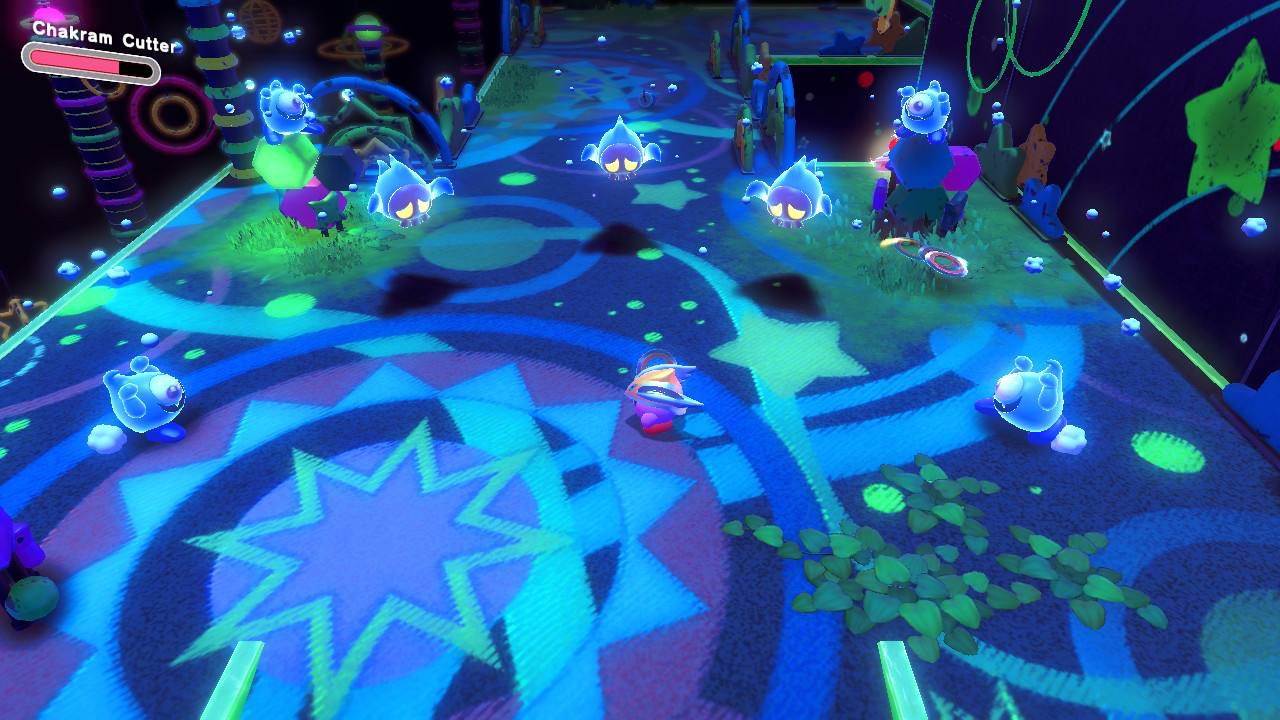
In Kirby and the Forgotten Land, the world looks more like our own than the magical worlds of Kirby’s past. Everywhere Kirby goes in Forgotten Land is a space with a palpable history, and the creatures move through it as though they have interests beyond Kirby. Levels are made up of full theme parks with sidewalks for Kirby to walk down and roller coasters to get in line for. The dog enemies will sit in chairs, eating a cake or waiting in line to ride the roller coaster just before Kirby barges in.
String lights brighten the dark hallways of broken down fencing and rusted escalators to create beautiful environments for Kirby to walk through. It is awe-striking seeing these environments as they signify spaces we are familiar with: churches, highways, malls, railway transit and theme parks. It is this representation that also brings a sense of awe because of our familiarity with those structures. Kirby has entered a realm where industrialization occurred, but it is also a world where it has come to ruin.
Kirby doesn’t engage with this aspect of its world beyond a bit of a tonally jarring final boss, another recurring trope of the series. Instead, these places are meant to emphasize this shift in Kirby’s new era. Since they are abandoned, they not only provide an open area for Kirby to explore but also emphasize a graphical quality that allows for a grand sense of scale and life-like detail. Kirby has left the storybooks of generations past and is expanding to explore larger, higher-fidelity spaces.
The modern Nintendo 3D platformer
With this translation to 3D, it’s hard not to make comparisons to Nintendo’s other 3D platformer on Switch: Super Mario Odyssey. The two have their differences in what each title is aiming to achieve; Super Mario Odyssey enlarged the sandbox design of the older Mario titles, implemented some 2.5D design from its previous titles, and embraced an unironic love for its cartoonish absurdity. Kirby and The Forgotten Land experiments with how Kirby spaces translate to 3D and what a world away from Planet Popstar would look like. There is not necessarily an immediate comparison to make at first glance.
However, the longer time spent with Kirby and The Forgotten Land begins to make the mind wonder about similarities. Why does the contrast of cartoonish characters in real world spaces remind me of Super Mario Odyssey? Didn’t Super Mario Odyssey have similar ways the environment hid collectibles? At one point, I began to debate what the real difference was between the two series, until I looked back at their older games. It was clear that only the contemporary titles held these similarities.
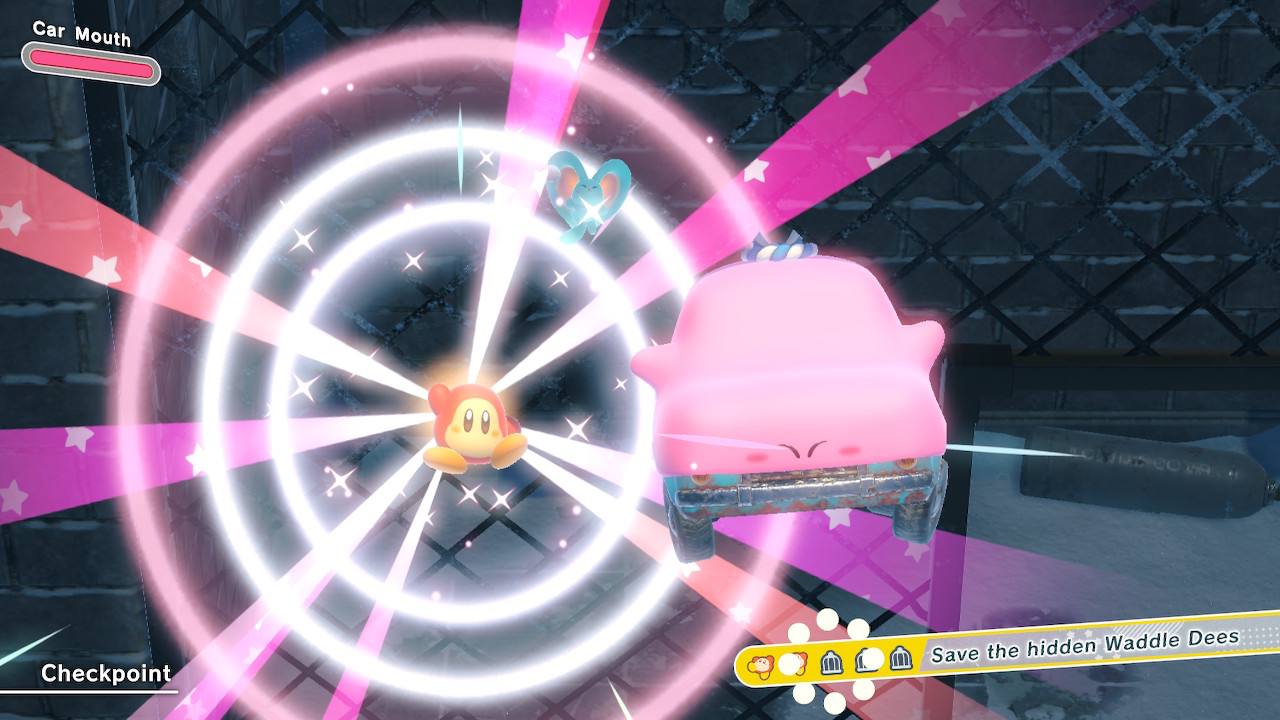
Despite their size differences, both Kirby and The Forgotten Land and Super Mario Odyssey design their level goals by spreading a large number of rewards throughout an area to be checked off a list. The checklist design, the glowing objects of interest, and the rewards hubs all becoming the standard for player goals. However, in their previous games, level goals were implemented differently. Kirby would sprinkle a level with small collectibles such as puzzle pieces or keychains to give the player a reason to explore alternative paths. Mario would reshape a world’s elements to setup a singular goal, recontextualizing a space and all of its characters to relate.
They also bring their protagonists to environments that come closer to our own reality more than ever before. This is true of the environments as well as the ways which the protagonist transforms. In Super Mario Odyssey, we saw Mario become everything from a dinosaur to a military tank. In Kirby and the Forgotten Land, Kirby can now become a car or a vending machine. These environments and their objects never replicate our reality, but they are mimicking it far closer than the fantasies of before.
This note isn’t made as a qualitative judgment of these titles, but an observation of a Nintendo developing a homogenized aesthetic across their contemporary 3D platformers. Playing through Kirby and The Forgotten Land many times invoked a nostalgia I hold for the era of Nintendo’s Gamecube 3D platformers like Wario World, where the areas were designed with creativity emerging from contained spaces rather than expansive ones. By comparison, the identity of Forgotten Land cannot fully exist on its own.
Bottom line
Despite the homogenization of Nintendo’s 3D platformers, Kirby and the Forgotten Land is nevertheless absolutely charming in its presentation and makes it easy to breeze through. When I initially started playing, I just wanted a game that embraced the candy-coated whimsy of being a cute platformer, and after completion I still feel it does just that.
Nothing ever fully challenges the player as much as it embraces the joy of twiddling around spaces. Levels are never overly expansive, and the game’s playtime comes in at a welcoming 12 to 15 hours. Kirby continues to do what it has done best, and that’s to provide a game that welcomes you in and never asks too much. If you would like to stay longer and check out what you missed, it doesn’t really feel too exhausting like so many other large games do this year.
This doesn’t make Kirby and the Forgotten Land a perfect game, but it provides a relaxing experience thanks to a charismatic design that many games cannot replicate.

